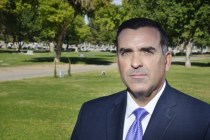Suicide: The quiet killer



On average, at least one person kills himself every day in Clark County.
Suicide kills more than car crashes and homicides combined — nearly 400 people last year alone.
Yet suicide gets a fraction of the public attention of other killers.

That silence is both a reflection and a cause of the stigma around suicide — a vicious circle that keeps people from asking for help and stops the state from getting resources to address the problem.
“As long as we keep this a secret, we’re not going to do anything about it,” said Linda Flatt, who became a suicide prevention advocate after her son Paul’s death in 1993.
Nevada once had the nation’s highest suicide rate, and still ranks among the worst 10 states in a so-called Western “suicide belt” where huge rural areas can foster independence — but also isolation.
“You mix the stigma with the frontier spirit, and you’ve got a situation where people don’t want to tell anybody they’re having problems,” Flatt said.
Las Vegas has its own risks. The 24-hour vices that people come from around the world to enjoy — drinking, gambling, sex — can lead to addiction and financial or health problems.
“We may have some of the same factors as other states — but we just may have a larger combination of them,” said Richard Egan, of the state’s suicide prevention office.
Meanwhile, Nevada is the country’s most transitory state, with 75 percent of its residents born elsewhere, according to a New York Times analysis.
That means a lot of people whose families and friends are far away, a disconnection that makes people less resilient, Egan said.

If people are looking for help for mental health conditions, there’s less of it here than almost anywhere: Studies show Nevada ranks near the bottom in mental health professionals per capita. And for some, jails and prisons take the place of treatment.
It’s commonly understood that people in jail often need treatment for substance abuse, but it’s less well known that for many mental health conditions trigger the substance abuse, said Sandy Stamates, president of the Nevada chapter of the National Alliance on Mental Illness.
“If you just treat symptoms and don’t find the underlying cause, it can be fatal,” Stamates said.
Ginger Paulsen, state executive director of the alliance, said her daughter died after “self-medicating” for an undiagnosed mental health condition.
“When you feel that you have no more hope left, that’s when you may take your life,” Paulsen said.
There are also people who come to Nevada just to die.

In 2014, 46 people who were not Nevada residents took their lives in Clark County. At least 16 died in a hotel or casino, although the coroner’s office would not release the exact locations, citing privacy concerns.
Advocates agree the only way to tackle the problem is to lift the stigma around mental health treatment, which takes time. Several made the comparison to cancer. Decades ago, it was a private matter with a stigma of its own. Now it’s discussed openly.
“We’ve broken that down when it comes to cancer,” Egan said. “Now we need to break that down when it comes to mental health disorders and suicide.”
Contact Eric Hartley at ehartley@reviewjournal.com or 702-550-9229. Find him on Twitter: @ethartley
One sure bet: Death in Las Vegas













